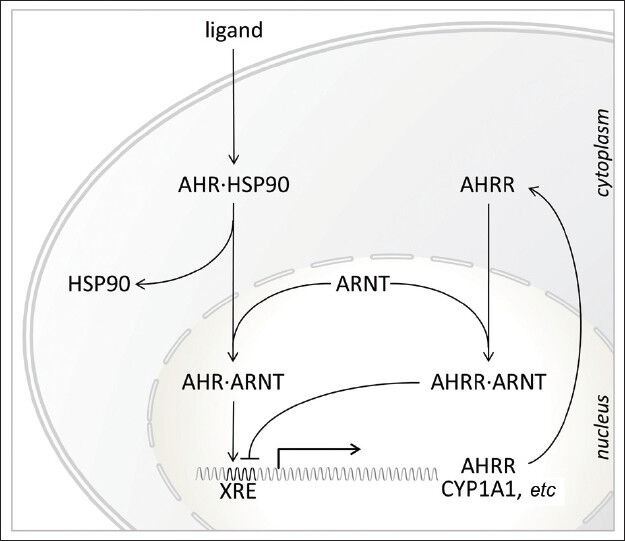Figure 1.

Schematic representation of ligand-activated AHR signaling. In the unliganded form, AHR resides in the cytoplasm as a complex with several chaperone proteins including heat shock protein 90 (HSP90). Ligand binding induces a conformational change in the AHR, revealing a nuclear localization signal that targets the AHR for nuclear translocation. In the nucleus, the AHR dimerizes with ARNT and interacts with the xenobiotic response element (XRE) in regulatory regions of specific target genes including AHRR and CYP1A1. In turn, AHRR acts as a repressor by competing for the dimerization with ARNT or directly at the XRE. AHR: aryl hydrocarbon receptor; AHRR: AHR repressor; ARNT, AHR nuclear translocator
